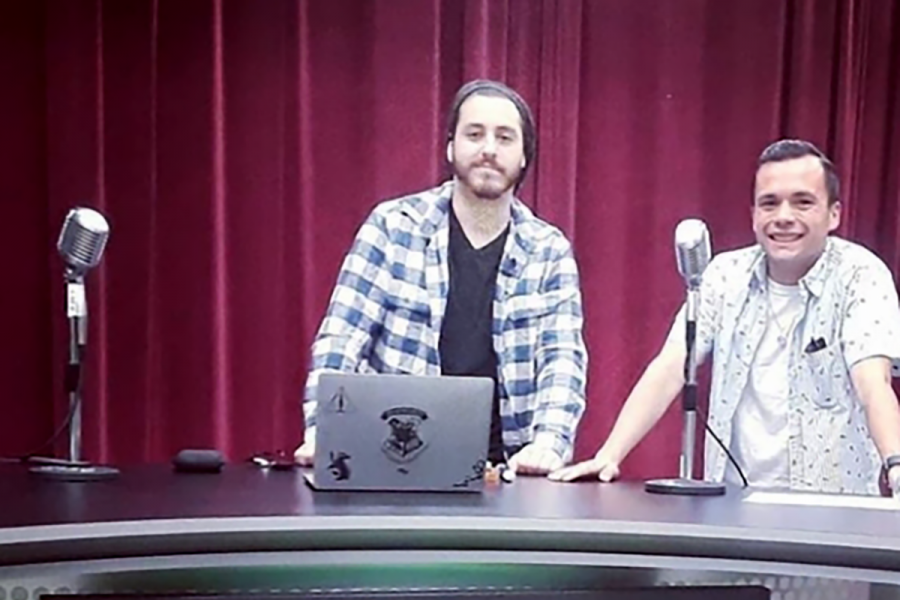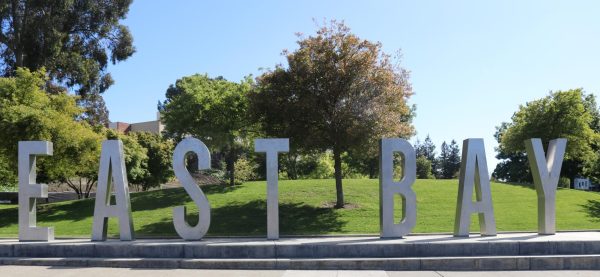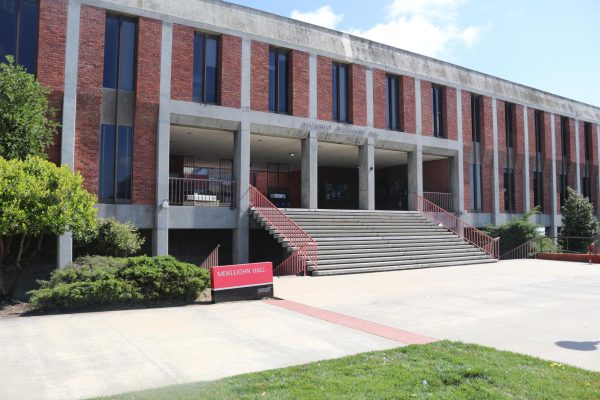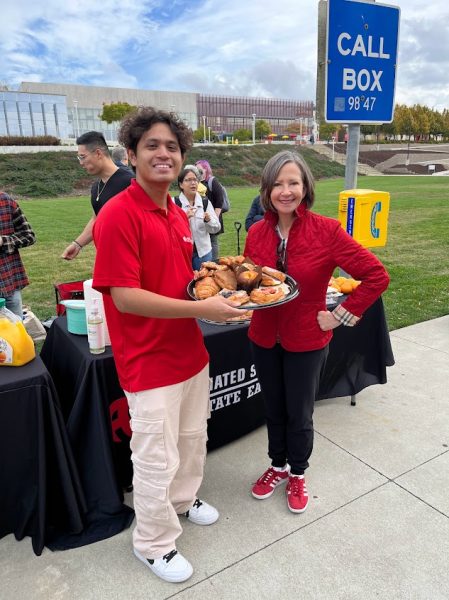Broadcast makes a comeback
December 5, 2019
California State University East Bay’s Production Studio, located on the bottom of the University’s library opened its broadcast studio on Oct. 31 for their first live YouTube stream in years.
The TV production studio on campus has fluctuated in operation since the early ’90s. From broadcasting the children’s television show “Duck Duck Goose,” to other shows like “One on One” with Michael Okrin, and “Math on T.V,” with Julie Glass, the studio has been utilized for multiple productions.
Other student productions such as the “Pioneer Web TV” was streamed in the studio until 2014. Student content for the program included live university sports games and cooking shows.
Since the studio has restarted production, it is now being utilized to live stream on Youtube Tuesdays and Thursdays from 1:30 p.m. to 3:00 p.m.
The TV studio continues to be run and organized by an appointed group of individuals that have a specific job in the department. President Norma Reese had contributed an abundant amount of time and resources in developing the studio before leaving in 2006 by improving its accessibility for students interested in Media Production.
The TV studio was unable to provide a sufficient amount of funding to keep the FCC license, which also resulted in the ceasing of the professional relationship with television broadcast company CNTV, according to CSUEB Media and Academic Technology Consultant Glenn Brewster.
With the recent reboot of the broadcasting equipment, Communication Department Chair Dr. Mary Cardaras has expressed her hopes that the university will consider the implementation of a Multimedia Art degree for students who are interested in pursuing in the broadcasting field.
“I would hope that somehow we would be able to contribute to an Arts and Multimedia degree program. We had tried to discuss such a degree with Art. I think such a degree would be great for art students as well as Communication students” Cardaras expresses.
Such degree proposals take time in order to be approved across the Education Board of Directors, which has not occurred for this type of degree. The emphasis in the Communication department has transitioned from broadcasting curriculum to the development of journalistic writing and editing skills.
“It would take at least a year to get such a degree up and running. We do have production in a new frame,” Cardaras said.
Although the use of the studio has not been consistent, it is still accessible to students to utilize as a resource and bring forth ideas to help develop productions.
















